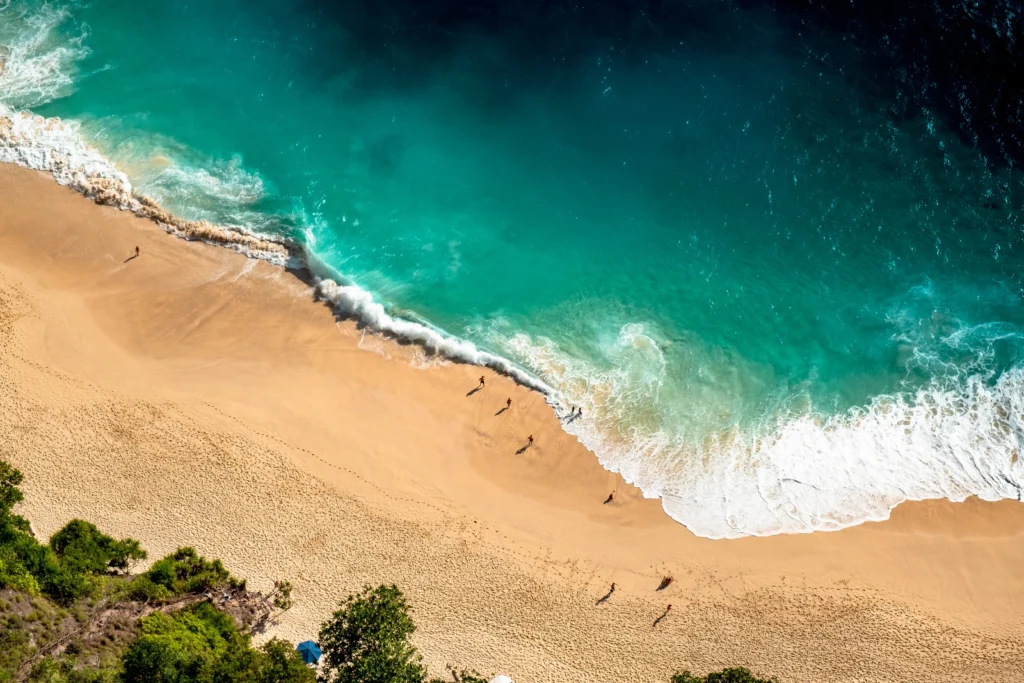Bali, an island renowned for its stunning beaches and verdant landscapes, is also a haven for art lovers and cultural aficionados. The vibrant museums Bali are rich repositories of creativity, showcasing everything from historical artifacts to luminous artwork. A tour through the top museums in Bali is essential for those who wish to immerse themselves in the deep tapestry of Balinese art and culture. Not only do these institutions house invaluable collections, they also offer interactive experiences that bring the island’s storied past and dynamic present into relief. From the famed Museum Pasifika in Nusa Dua to the array of galleries that dot Ubud’s cultural landscape, the Bali attractions extend beyond the conventional, inviting travelers into the very heart of the island’s artistic soul.
- Key Takeaways
- The Enchanting World of Balinese Museums
- Unveiling the Mysteries at Museum Pasifika Nusa Dua
- Engage with the Past at the Agung Rai Museum of Art (ARMA)
- Artistic Legacies at the Blanco Renaissance Museum
- Pioneers of Balinese Art at Museum Puri Lukisan
- Exploring the Essence of Bali at Neka Art Museum
- Discovering Historical Elegance at Le Mayeur Museum
- Embrace the Mystery at Setia Darma House of Masks and Puppets
- A Fusion of Cultures at Museum Pasifika
- Saluting History at the Bajra Sandhi Monument
- Art in Context at the Museum Rudana
- Museums Bali: A Gateway to Cultural Immersion
- Conclusion
- Source Links
Key Takeaways
- Museum Pasifika, a celebrated art destination, is highly recommended for those fascinated by Asia-Pacific’s cultural diversity.
- Understanding Balinese heritage can be achieved through the numerous museum collections spread across the island.
- Interactivity and workshop offerings in Bali’s museums engage visitors in a hands-on exploration of local history and traditions.
- Bali’s museum scene provides an essential counterbalance to its beach and temple attractions, highlighting the island’s dedication to preserving and sharing its cultural wealth.
- Art enthusiasts have the opportunity to witness artworks and artifacts that reflect a confluence of local and international influences within Indonesian culture.
The Enchanting World of Balinese Museums
As a treasure trove for enthusiasts of Bali’s art and culture, the island’s museums provide a fascinating lens into its rich heritage. Renowned as some of the best museums in Bali, establishments such as the Agung Rai Museum of Art (ARMA), Blanco Renaissance Museum, and Museum Puri Lukisan stand out as cultural beacons that artfully combine traditional with contemporary, and textiles with textures.
Each of these cultural museums in Bali offers distinct narratives about the island’s history, manifested through an array of visual mediums. From luscious landscapes to spiritual scenes, these art pieces are testimonies to a civilization rich in diversity and creativity. Let’s explore some of the key features that make these museums a must-visit:
- The Agung Rai Museum of Art (ARMA) not only showcases works by notable Balinese artists but also offers cultural workshops, setting itself apart as an interactive hub for art and education.
- Blanco Renaissance Museum captivates its audience with a blend of dramatic colors and engaging compositions, reflecting the vibrant and sometimes whimsical spirit of Bali.
- Museum Puri Lukisan is the island’s oldest art museum, where visitors can trace the evolution of Balinese art styles through its impressive collection of paintings and sculptures.
In this enchanting world, the museums of Bali are more than simple buildings; they are sanctuaries where the island’s soul is preserved and shared. A visit here extends beyond the typical tourist trail and into the heart of Bali, where stories of the past are vividly brought to life.
Unveiling the Mysteries at Museum Pasifika Nusa Dua
Nestled in the heart of Nusa Dua, Museum Pasifika emerges as a beacon for art lovers and history buffs. This quintessential institution proudly displays an extensive palette of Asian Pacific artistry and Indonesian cultural heritage. Visitors from around the globe are welcomed to explore the rich artistic expressions and the captivating interactive exhibitions that make Museum Pasifika a unique gem among art museums in Bali.
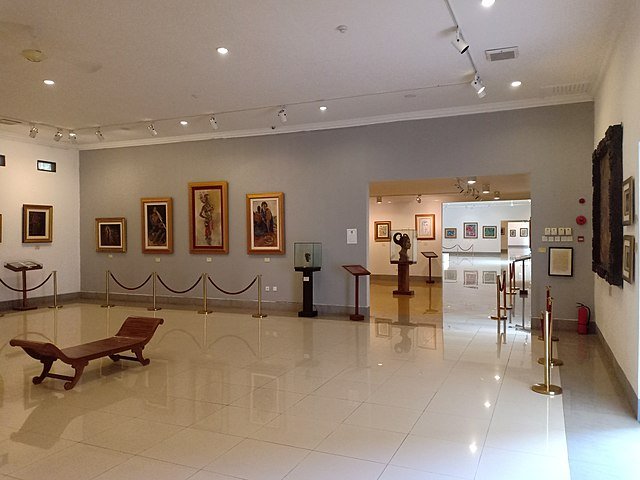
The Diversity of Artistic Expression
With an impressive collection in 11 distinct showrooms, Museum Pasifika exhibits a range that celebrates the multifaceted art scene of Indonesia and its neighbors. Noteworthy pieces by several Indonesian masters, such as Raden Saleh and Affandi, sit alongside works by Indo-European artists influenced by the cultural vistas of Indonesia, including Walter Spies and Arie Smit. Paul Gauguin and Henri Rousseau’s Asian-inspired works further underscore the profound connection between East and West.
Experiencing Indonesia’s Cultural Heritage
Museum Pasifika is more than just a repository of fine art; it’s a journey that transports visitors through the vibrant story of Indonesia’s cultural legacy. Authentic pieces, ranging from traditional to contemporary, weave a narrative that is both historical and personal. The museum’s dedication to cultivating a deeper understanding of Indonesia’s contributions to the arts positions it as a critical custodian of Indonesian cultural heritage.
Interactive and Educational Exhibitions
The museum’s interactive exhibitions provide an immersive experience that goes beyond passive observation. Engaging workshops offer hands-on activities that allow visitors to not only see Indonesian culture but also to participate in it. This experiential approach to learning makes the museum a dynamic hub for cultural education and an exciting part of the vibrant art museums in Bali.
| Exhibition Room | Featured Artists | Type of Artwork | Interactive Offerings |
|---|---|---|---|
| Indonesian Pavilion | Raden Saleh, Affandi | Paintings, Sculptures | Art Creation Workshops |
| European Artists | Walter Spies, Arie Smit | Paintings inspired by Indonesia | Cultural Exchange Discussions |
| Asian Inspirations | Paul Gauguin, Henri Rousseau | Asian influenced Artworks | Gallery Walk-throughs |
Engage with the Past at the Agung Rai Museum of Art (ARMA)
The Agung Rai Museum of Art (ARMA), nestled in the lush landscape of Ubud, Bali, provides a unique lens through which to explore Balinese art’s evolution. Considered one of the pivotal museums in Ubud Bali, ARMA stands out not only as a mere gallery but also as a vibrant cultural hub steeped in the island’s artistic traditions.
Founded by the visionary Agung Rai, ARMA exudes his passion, aiming to preserve and promote Balinese art across a variety of mediums. Visitors are treated to an extensive collection that offers a chronological journey through Bali’s artistic narrative, encapsulating both the traditional aspects and the currents of modernity that influence and redefine the cultural landscape.
- The museum’s traditional exhibits feature classic works, including the famed Kamasan-style paintings and intricate woodcarvings.
- In the contemporary galleries, one finds bold interpretations of Balinese themes through abstract and conceptual art forms, painting a new future for the island’s artistic expression.
- ARMA is renowned for its educational outreach, providing workshops and live cultural performances that deepen guests’ understanding of the artworks and their significance within Balinese society.
By offering these immersive experiences, the Agung Rai Museum of Art becomes more than a destination; it becomes a narrative that visitors can participate in, leaving with a heightened sense of connection to Bali and its enduring cultural heritage.
In addition to its galleries, ARMA’s verdant gardens and architectural beauty make it a serene retreat where the environment complements the art, providing a holistic experience of beauty and tranquility. It’s a must-visit for anyone wishing to delve deep into the world of ARMA and Balinese art, gaining insight from the past and discovering the dynamic creativity that defines Ubud’s contemporary art scene.
Artistic Legacies at the Blanco Renaissance Museum
Set against the lush backdrop of Ubud, the Blanco Renaissance Museum emerges as a testament to the vibrant and often whimsical world of post-war and contemporary art in Bali. As visitors approach the museum, they are greeted not only by artworks but by the living essence of Bali’s natural and cultural beauty. With art pieces steeped in history and a location that offers stunning scenic views, the museum is a pivotal element of the contemporary art museums Bali landscape.
Familial Artistic Flair
The heart of the Blanco Museum is the enduring artistic passion of the Blanco family. Don Antonio Blanco and his son Mario have infused the space with a magnetic blend of creativity and playfulness that continues to draw crowds. This familial dedication to the arts provides a vibrant soul to the museum’s collection, which features a vast array of works ranging from classical to modern interpretations.
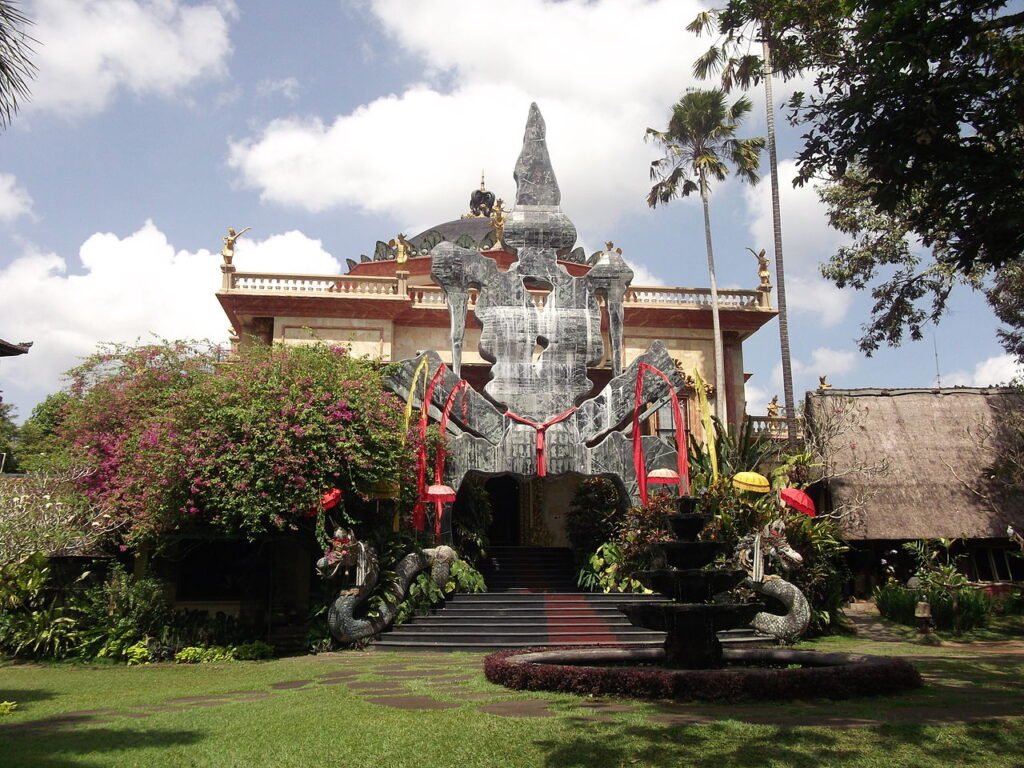
Unforgettable Views and Humorous Twists
Known for its strategic location, the museum commands some of the most memorable views of Ubud, overlooking the Campuhan River. It’s a panorama that rivals the artistic allure within its walls, offering a sensory experience that combines sight with the intellectual and emotional reactions provoked by the art. For those searching for museums near me while in Bali, the Blanco Renaissance Museum is a compelling addition, delivering humor and novelty alongside artistic merit.
Whether visitors are seasoned connoisseurs of art or families looking to spend an afternoon immersed in culture, the Blanco Renaissance Museum accommodates a wide audience with its curious mix of lush landscapes and artistic expressions. It stands as a highlight among contemporary art museums Bali, framing its exhibits not just with frames but with the very beauty and humor that is quintessentially Balinese.
Pioneers of Balinese Art at Museum Puri Lukisan
At the heart of Ubud’s cultural landscape is the Museum Puri Lukisan, a cornerstone among historical museums in Bali. This eminent institution boasts an extensive display of traditional Balinese art, capturing the evolution of the island’s distinctive artistry. Renowned figures, including the likes of I Gusti Nyoman Lempad, have significantly contributed to the cachet and collection diversity found within the confines of the museum’s architecturally traditional buildings.
The museum serves as an invaluable chronicle, detailing the artistic journey of Balinese painters and woodcarvers. A visit to Museum Puri Lukisan is more than just an exhibition tour; it is a voyage through the historical narrative of traditional Balinese art, offering visitors an intimate glance into the creative essence that has been woven into the fabric of Bali for decades.
| Collection Highlights | Artist Contributions | Art Forms |
|---|---|---|
| Pre-War Classical Paintings | I Gusti Nyoman Lempad | Paintings |
| Ubud Style Post-War Art | Anak Agung Gde Sobrat | Woodcarvings |
| Young Artist Movement | I Gusti Made Deblog | Mixed Media |
| Batuan Style Drawings | I Nyoman Ngendon | Pen & Ink Drawings |
Frequent art exhibitions and cultural activities at the Museum Puri Lukisan offer an engagement with local culture that goes beyond mere observation. Its purpose spans further, to imbibe within its patrons, a profound respect and understanding for Bali’s rich art heritage. For those who seek to immerse themselves in the world of traditional Balinese art, it is an indelible part of the art historical journey across the island.
Exploring the Essence of Bali at Neka Art Museum
The Neka Art Museum stands as a bastion of Balinese visual arts, capturing the essence of the island’s rich cultural diversity. Founded by the esteemed Wayan Suteja Neka, this institution is more than a museum; it’s a vibrant cultural repository located in the heart of Ubud. With an extensive collection that chronicles the evolution of the island’s art, Neka Art Museum serves as a gateway to Bali’s soul for visitors from across the globe.
The Tapestry of Balinese Art Development
Among its many contributions to the cultural landscape, the museum traces the development of Balinese art, showcasing its transformation from traditional to modern expression. The museum’s galleries tell a chronological story, highlighting pivotal moments in the art history that reflect the island’s dynamic culture. It not only preserves these traditional forms but also showcases contemporary works that continue to evolve from these rich artistic traditions.
Spotlight on Renowned Artists
In its curated spaces, the Neka Art Museum pays homage to the work of renowned Balinese artists, including the legendary I Gusti Nyoman Lempad. His masterpieces, alongside those by other prominent artists, provide a window into the past and are part of the museum’s dedication to celebrating the individuals who have shaped Bali’s artistic heritage.
| Artist | Style | Contribution |
|---|---|---|
| I Gusti Nyoman Lempad | Traditional Balinese | Revitalization of Balinese Art |
| Wayan Suteja Neka | Documentary | Founder of the Neka Art Museum |
| Other Notable Artists | Various | Diverse Artistic Expressions |
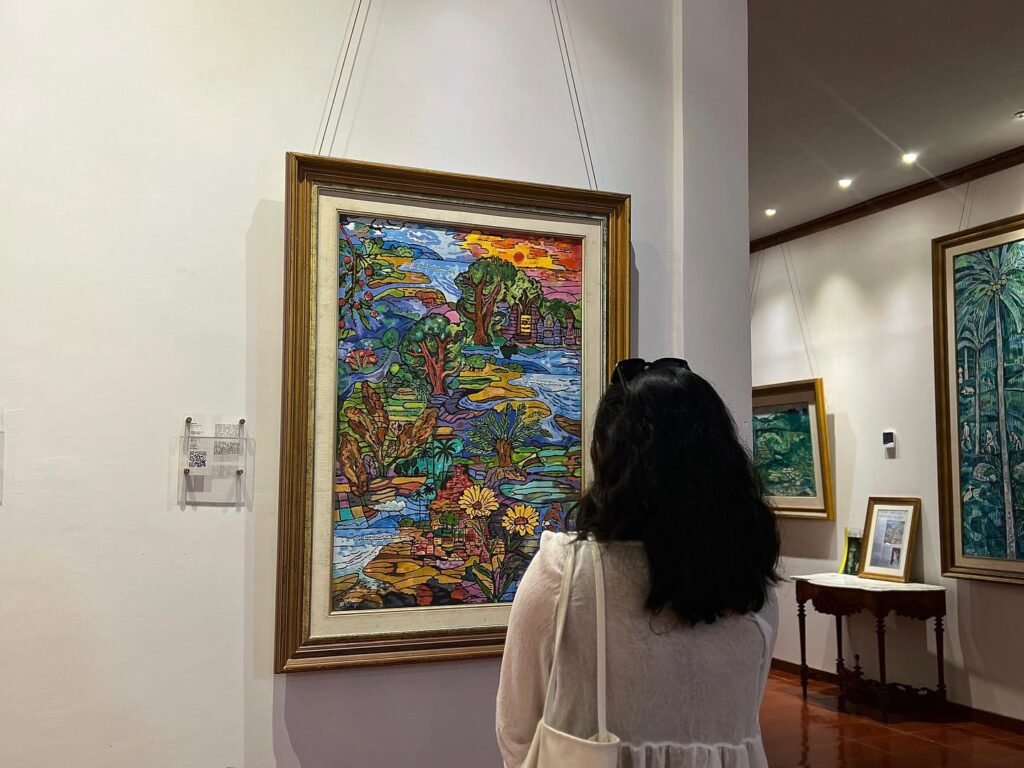
Discovering Historical Elegance at Le Mayeur Museum
The serene coastal vibrancy of Sanur sets the scene for a cultural journey back in time at the Le Mayeur Museum, an institution dedicated to preserving the artistic heritage of Adrien-Jean Le Mayeur de Merpres. As a vivid reflection of Balinese culture and life, the museum presents a collection that encapsulates the harmonious blend of local tradition with foreign artistic sensibilities.
Le Mayeur’s passionate affair with Bali is palpable through the approximately 80 pieces of art on display. These works not only depict the artist’s love for the island but also the daily lives and elaborate ceremonies that define Balinese culture. Below is a table highlighting key aspects of the museum that attract both art aficionados and cultural historians.
| Feature | Description |
|---|---|
| Location | Nestled in the heart of Sanur |
| Historical Significance | Former home of Adrien-Jean Le Mayeur |
| Collection Size | Around 80 paintings |
| Artistic Focus | Depictions of Balinese ceremonies and daily life |
| Visitor Experience | An intimate look at Le Mayeur’s relationship with Bali and its people |
For those seeking a deeper connection with the historical elegance of Sanur and the broader artistic renditions of Balinese culture, the Le Mayeur Museum stands as an essential destination.
Embrace the Mystery at Setia Darma House of Masks and Puppets
Amid the lush landscapes of Bali, the Setia Darma House of Masks and Puppets beckons cultural aficionados to explore its vast collection, celebrating the rich tapestry of Indonesian tradition. Embedded deep within the Balinese spiritual power, each mask and puppet is an embodiment of the island’s soul, echoing tales of heritage and myth.
The Largest Collection of Masks and Puppets
With an assemblage surpassing many others globally, the institution is dedicated to the conservation of these significant cultural artifacts. Catering to both enthusiasts of ethnology and casual visitors, the establishment offers an unparalleled journey through Indonesia’s cultural history, with over 1,300 masks and an impressive 5,700 puppets.
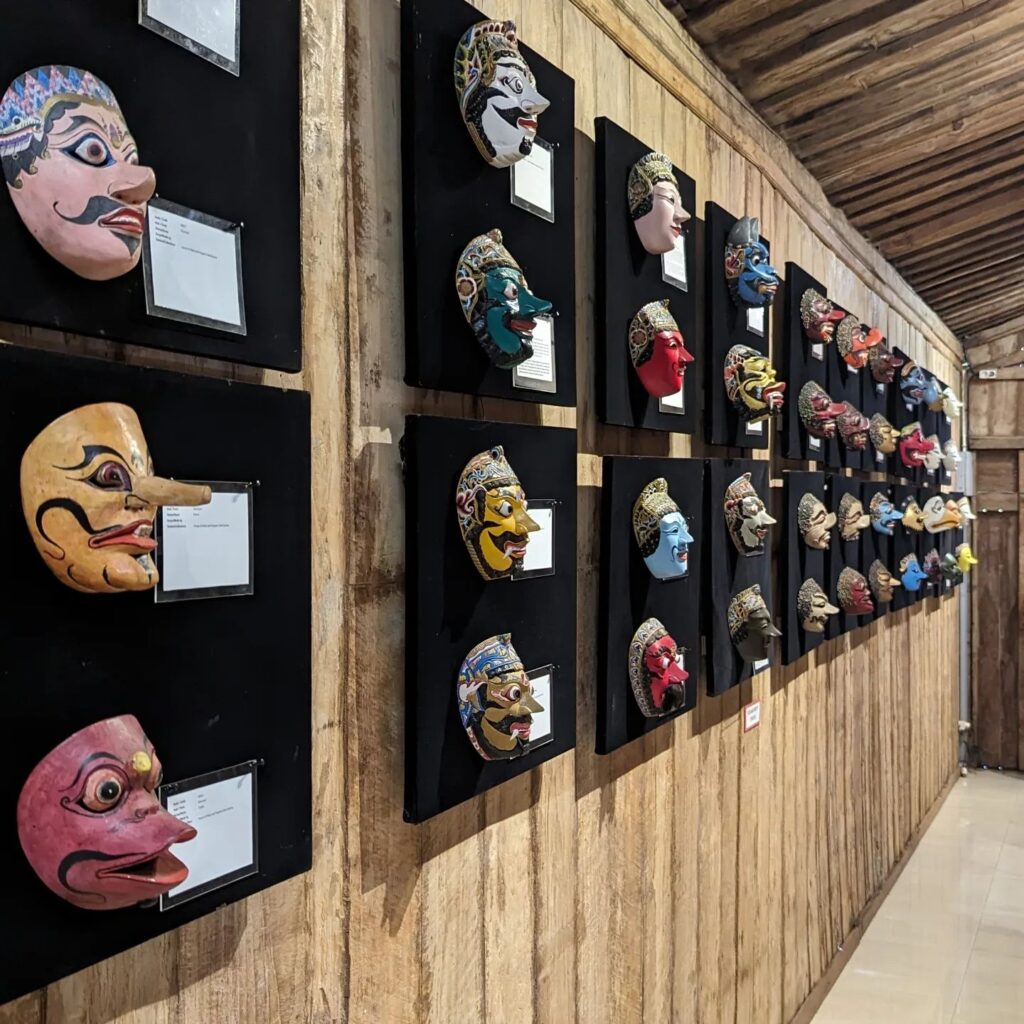
Preserving Indonesian Heritage
The mission of the Setia Darma House of Masks and Puppets extends beyond mere exhibition. It strives to safeguard these relics of the past for future generations, keeping the ancestral wisdom and stories alive. Through engaging guided tours and educational initiatives, the museum strengthens the understanding of Indonesia’s cultural heritage, inviting visitors to witness the majestic art of storytelling that has flourished for centuries.
| Mask Type | Origin | Use |
|---|---|---|
| Topeng | Balinese | Dance-dramas |
| Wayang Wong | Javanese | Ritualistic storytelling |
| Barong | Balinese | Sacred performances |
The Setia Darma House is more than a museum; it’s an immersive experience that fuses the enchantment of puppetry with the mystique of masks, serving as a vital guardian of Indonesia’s legacy. The reverence for Balinese spiritual power and the commitment to cultural preservation turns every visit into a profound venture into the heart of the island’s enigmatic allure.
A Fusion of Cultures at Museum Pasifika
The Museum Pasifika presents an unparalleled collection that articulates the profound global influence on Balinese culture and its celebrated cultural diversity. A visit to this museum unravels a dynamic narrative that underlines Bali’s rich dialog with global art movements, encapsulating more than just its local charm and heritage.
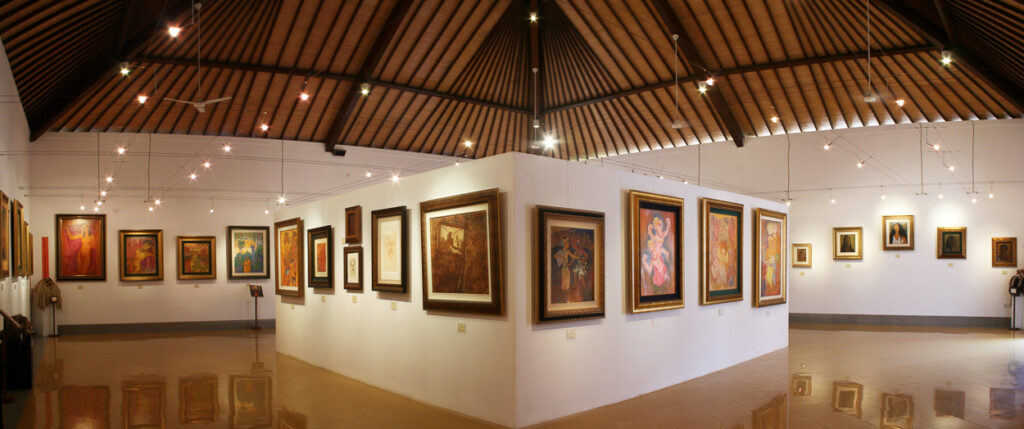
Within the walls of Museum Pasifika, visitors encounter various galleries that unmask the extensive canvas of international relations, illustrated by over 200 artists from 25 countries. These artists have found inspiration in the spirit of Bali, resulting in a vibrant fusion contained within their masterful creations.
It is this global tapestry that shows how interconnectedness can breed an eclectic and harmonious blend of artistic impressions. Notably, the following table summarizes the diverse origins of the artists and the influence of their homelands on the artworks showcased in Museum Pasifika.
| Region | Number of Artists | Influence on Local Culture |
|---|---|---|
| Indonesia | 50 | Historical art forms and modern interpretations of cultural themes |
| European | 40 | Classical influences merged with tropical themes |
| Oceanian | 30 | Aboriginal and Maori cultural art forms interwoven with Balinese styles |
| American | 25 | Modern and abstract expressions bridging West and East |
| Asian | 55 | Traditional Asian motifs blended with Balinese narratives |
The Museum Pasifika not only celebrates these myriad influences through its exhibitions but also through educational programs and cultural workshops. This initiative strengthens cross-cultural dialogue and further reinforces Bali’s position as an influential hub in the global art scene.
Saluting History at the Bajra Sandhi Monument
The Bajra Sandhi Monument stands as a towering testament to the resilience of Balinese culture in the face of historical challenges. This architectural marvel does more than catch the eye; it serves as a crucial educational resource, encapsulating Bali’s past through its engaging dioramas and insightful collections. A visit to this monument offers not just a step back in time, but a deepened understanding of the spirit that underpins Bali’s cultural preservation.
Dioramas Depicting Bali’s Timeline
Embedded within the stone walls of the Bajra Sandhi Monument are dioramas that vividly illustrate Bali’s storied history. These intricate, three-dimensional representations reveal the defining moments that have shaped the island, from its early settlements to modern-day achievements. Each diorama is a window into the island’s soul, expertly crafted to convey the historical significances that have forged Bali’s identity.
Understanding the Struggle for Cultural Preservation
Deep within the monument’s halls, the continuing struggle for cultural preservation resonates. As visitors wander through the corridors, they are confronted with the tenacious efforts of the Balinese people to safeguard their rich heritage against external pressures. The monument’s collections emphasize the enduring fight to maintain Bali’s cultural integrity, honoring the sacrifices made for its survival.
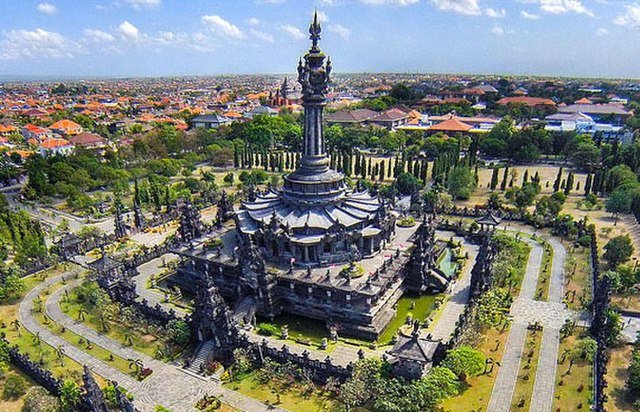
Art in Context at the Museum Rudana
Nestled within the artistic hub of Ubud, Museum Rudana stands as a beacon of Balinese culture and a nurturing ground for art education. Established by the esteemed Rudana family, the venue proudly exhibits a seamless blend of traditional and modern artistry from emerging Balinese artists, showcasing the true spirit of Bali’s creative diversity. This institution is not merely a museum; it’s a cultural touchstone that enhances the public’s access to Balinese art and crafts.
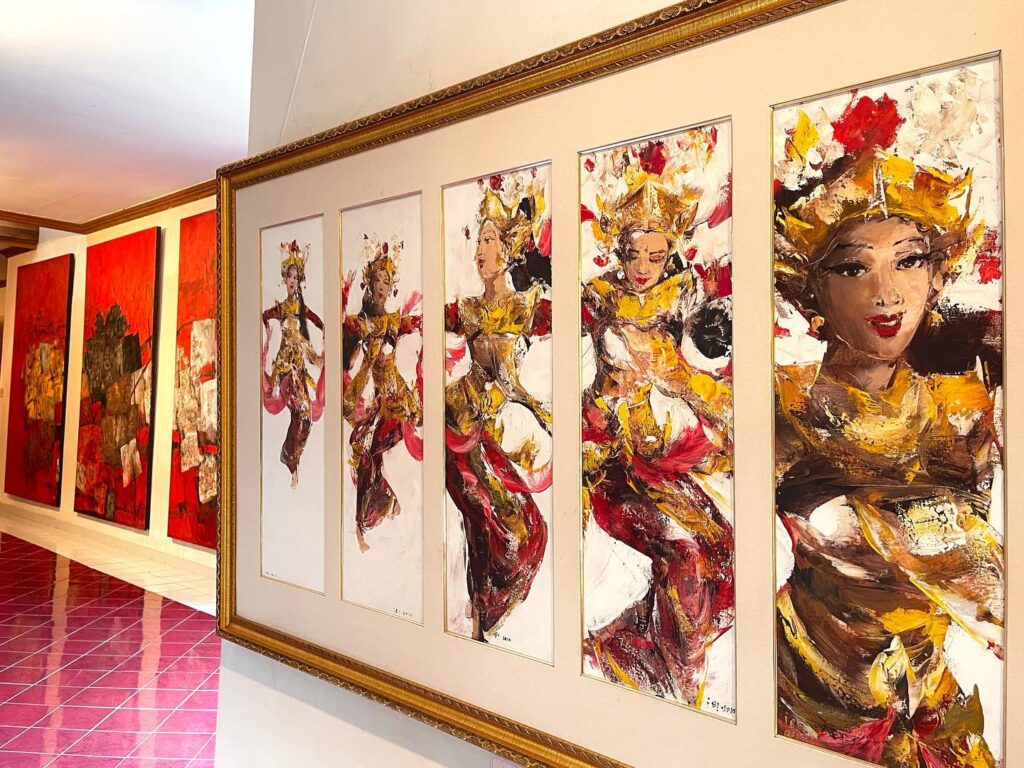
The Museum’s commitment to art education and the support of local talent forms the cornerstone of its mission. Through various exhibitions, workshops, and community programs, Museum Rudana invests in the vibrant future of Bali’s artistic scene. Visitors are invited to immerse themselves in an educational journey, gaining insights into the craftsmanship and thematic richness of the island’s art forms.
| Exhibition Highlights | Art Education Initiatives |
|---|---|
| Time-honored Balinese Paintings | Interactive Workshops for All Ages |
| Contemporary Sculptures | Artist Talks and Roundtable Discussions |
| Multimedia Installations | Outreach Programs for Local Schools |
| Fine Art Photography | Creative Art Classes and Demonstrations |
The combination of intimate galleries and dynamic educational encounters renders Museum Rudana a unique and essential destination for those seeking to delve into Ubud‘s artistic legacy. It’s a place where art is not only seen but experienced, and where every visitor walks away with a deeper appreciation of Bali’s aesthetic richness and cultural vibrancy.
Museums Bali: A Gateway to Cultural Immersion
Embarking on a personalized museum adventure in Bali is tantamount to opening a vibrant book of art, history, and culture. Through a tailored exploration of the must-visit museums in Bali, visitors can absorb the island’s rich artistic heritage. Museums serve as portals for cultural immersion, presenting an array of exhibitions that range from ancient traditions to contemporary artistic expressions.
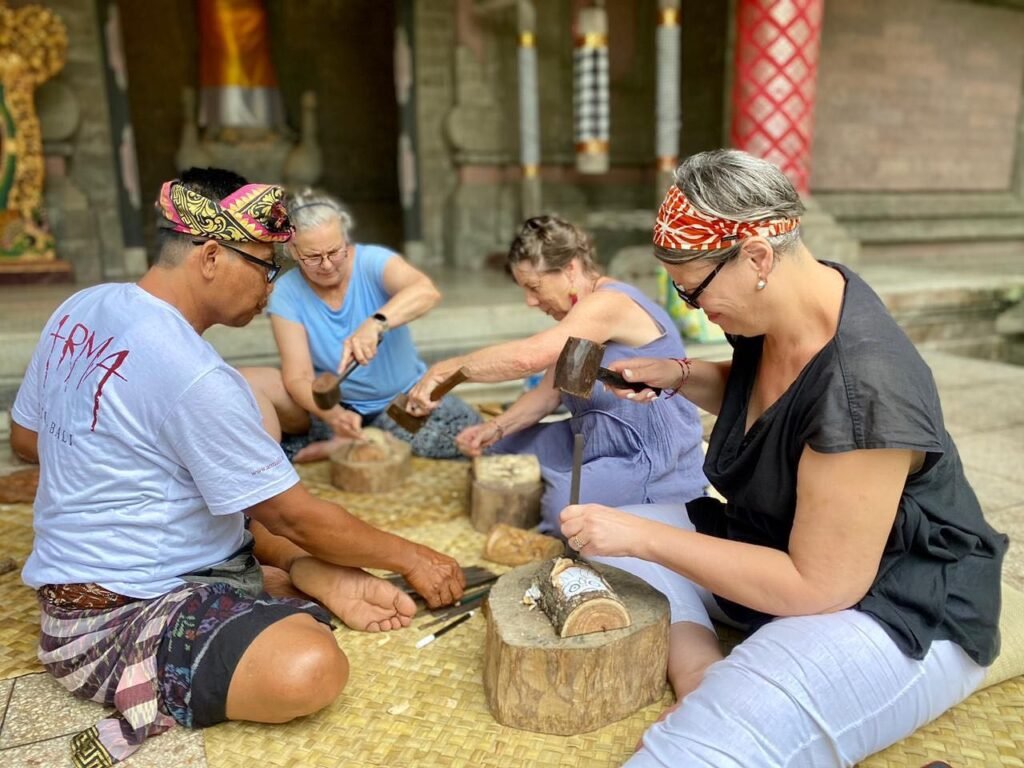
Curating a Personalized Museum Adventure
In Bali, creating your journey through the realms of history and art can lead to an enriching discovery of self and culture. Whether it’s indulging in the intricate artworks at Museum Pasifika or delving into the wonders of traditional masks at the Setia Darma House of Masks and Puppets, each experience can be crafted to reflect individual tastes and preferences.
Combining Art with Nearby Attractions
Pairing the quest for art with nearby Bali attractions transforms a simple excursion into a full-fledged adventure. The geographical harmony in Bali allows for seamless transitions from museum corridors to the tranquility of tropical gardens or the sacredness of nearby temples. Merging visits to these museums with the island’s natural and historical sites offers a wholesome and multifaceted travel experience.
| Museum | Artistic Focus | Nearby Attraction |
|---|---|---|
| Agung Rai Museum of Art (ARMA) | Balinese art & cultural performances | Ubud Monkey Forest |
| Blanco Renaissance Museum | Modern art & tropical atmosphere | Campuhan Ridge Walk |
| Museum Puri Lukisan | Traditional Balinese paintings & woodcarving | Ubud Royal Palace |
| Neka Art Museum | Balinese and Indonesian paintings | Tegalalang Rice Terrace |
The convergence of Bali’s artistic endeavours with its surrounding allure epitomizes the essence of travel—where learning and leisure coalesce to create memories that linger, like the gentle afterglow of an island sunset.
Conclusion
The journey through Bali’s museums enriches the senses and connects travelers with the vibrant threads that compose the island’s rich tapestry of culture and history. The diverse Bali museum experience offers not just a glance, but a deep dive into the heart of its artistic endeavors and historical narratives. Each visit unearths stories of local and international artists who have ingrained their distinctive imprints on Bali’s cultural landscape.
A memorable cultural journey awaits those who seek to discover Bali’s heritage through its varied and captivating museums. It isn’t merely about observing artifacts and art; it’s an educational voyage that captures the imagination and imparts a deeper understanding of the island’s spiritual and aesthetic essences. These institutions stand as proud custodians of Bali’s past and present, inviting guests to witness a legacy carved through creativity and tradition.
In essence, to discover Bali’s heritage is to partake in a unique and unforgettable exploration of its soul. The museum pathways guide visitors to not just see, but to feel, learn, and remember the intrinsic beauty that pulses throughout Bali. The kaleidoscopic museum experience promises a blend of pleasure and enlightenment, ensuring that the spirit of Bali lingers long after the journey concludes.
FAQ
What are the top museums to visit in Bali?
Bali boasts several museums that visitors shouldn’t miss. The top museums include Museum Pasifika, Agung Rai Museum of Art (ARMA), Blanco Renaissance Museum, Museum Puri Lukisan, and Neka Art Museum.
Can you give me more information about Museum Pasifika in Nusa Dua?
Museum Pasifika features an extensive collection of over 600 artworks by more than 200 artists from 25 countries, highlighting the influence of Asia-Pacific cultures. The museum showcases artistic diversity through its 11 display rooms with interactive and educational aspects.
What can I expect to see at the Agung Rai Museum of Art?
At the Agung Rai Museum of Art (ARMA), visitors can explore a wide array of traditional and modern Balinese art. Beyond the visual arts, ARMA offers cultural workshops, performances, and educational programs within a serene and inspiring setting.
What makes the Blanco Renaissance Museum unique?
The Blanco Renaissance Museum is known for its collection of works by Don Antonio Blanco and his son Mario. Set against the lush backdrop of Ubud, this museum offers whimsical art pieces, breathtaking views, and a family-friendly atmosphere.
What kind of art is featured at Museum Puri Lukisan?
Museum Puri Lukisan in Ubud is Bali’s oldest art museum and showcases an extensive collection of traditional Balinese paintings and woodcarvings, reflecting the evolution of Balinese artistic styles through various periods.
Can you tell me about the art at Neka Art Museum?
Neka Art Museum provides a comprehensive overview of Balinese art history by displaying both traditional and contemporary works. It features notable pieces by Indonesian artists such as I Gusti Nyoman Lempad, among others.
What does Le Mayeur Museum in Sanur highlight?
Le Mayeur Museum focuses on the works of Belgian artist Adrien-Jean Le Mayeur de Merpres, capturing scenes of Balinese life and culture. His legacy is preserved within the museum’s grounds, his former home, offering a historic glimpse into his life with his muse Ni Pollok and the Sanur community.
What is special about the Setia Darma House of Masks and Puppets?
The Setia Darma House of Masks and Puppets is a cultural preserve housing an extensive collection of over 1,300 masks and 5,700 puppets from Indonesia and around the world, showcasing the artistry and spiritual significance of these traditional forms.
How does Museum Pasifika contribute to a fusion of cultures?
Museum Pasifika not only presents Balinese art but also features works by artists from various countries, illustrating the island’s allure and its impact on global art. The museum captures the essence of cultural exchange and diversity, enriching Bali’s artistic tapestry.
What historical insights does the Bajra Sandhi Monument provide?
The Bajra Sandhi Monument is more than a museum—it’s a pivotal emblem of Bali’s historical journey, particularly its resistance against Dutch colonialism. The monument’s dioramas and collections provide a vivid depiction of the island’s struggle for political and cultural sovereignty.
What type of artwork does Museum Rudana exhibit?
Museum Rudana presents a blend of traditional and contemporary Balinese art. Established to cultivate and highlight local talent, the museum offers an in-depth look at the island’s artistry, from classical forms to avant-garde expressions.
How can visitors experience cultural immersion through Bali’s museums?
Bali’s museums offer a deep dive into the island’s rich heritage. Visitors can plan a personalized journey, combining visits to various art and cultural institutions with exploration of nearby beaches, temples, and historical sites for a comprehensive cultural experience.

